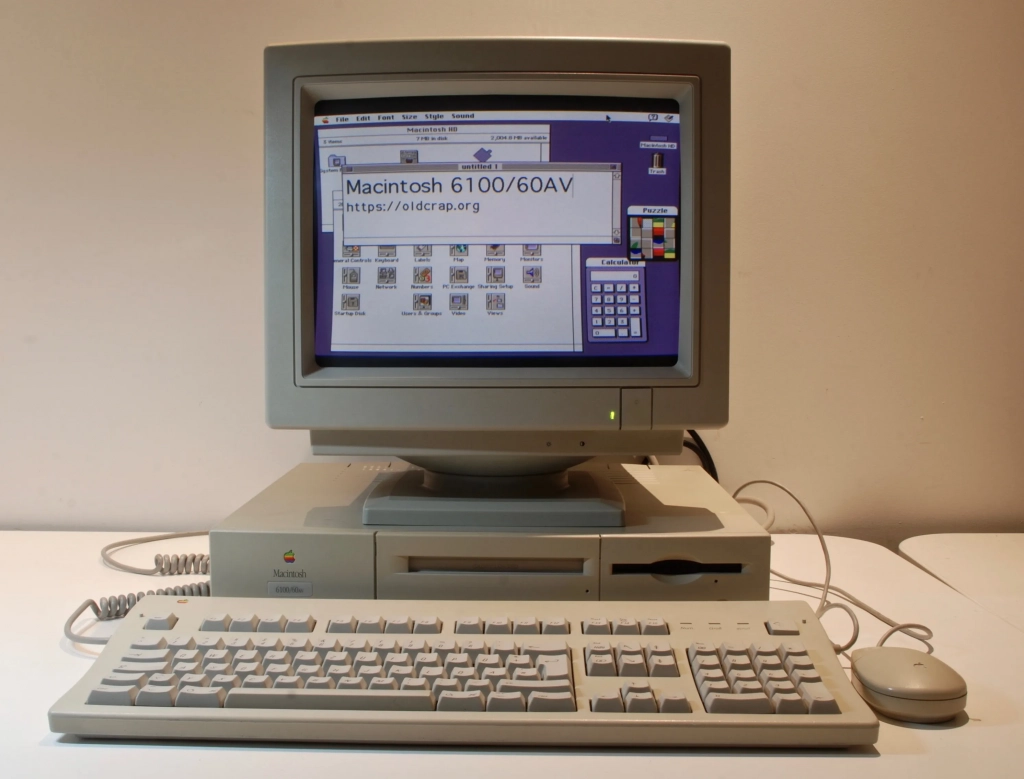In the ever-evolving landscape of technology, we often find ourselves marveling at the latest cutting-edge devices, forgetting the stepping stones that paved the way for our modern digital experiences. Today, we turn our attention to a significant moment in Apple’s history—the introduction of the Apple Performa Display. Although it may no longer be available, this 14-inch Color RGB Monitor left an indelible mark on Apple’s legacy, showcasing the company’s unwavering commitment to innovation and design.
On September 1, 1992, Apple unveiled the Apple Performa Display as part of their revered Apple Display series. This stunning monitor boasted a 67 dpi screen, resolutions of up to 640 x 480 pixels, and an impressive palette of 32,000 colors. The integration of a DA-15 video connection ensured seamless compatibility with the Macintosh Performa 400, augmenting the user experience and cementing the display as a formidable addition to Apple’s product lineup.
At its core, the Apple Performa Display was a testament to Apple’s forward-thinking approach. Its advanced technology not only showcased the company’s dedication to pushing the boundaries but also highlighted its prowess in creating products that could seamlessly integrate into the Macintosh ecosystem. With the Performa Display, Apple was setting the stage for a more vibrant and visually immersive computing experience.
However, despite its initial promise, the Apple Performa Display did not enjoy a long-term stint in Apple’s offerings. On July 18, 1994, Apple made the decision to discontinue the display, leaving behind a legacy that spans three decades. While the Performa Display may have faded into the annals of Apple’s history, its impact should not be underestimated.
In retrospect, the Apple Performa Display serves as a poignant reminder of Apple’s dedication to pushing the boundaries of technology. Its sleek design, characterized by clean lines and a minimalist aesthetic, exemplified the company’s penchant for combining functionality with elegance. Apple’s relentless pursuit of innovation and design excellence was encapsulated in this unassuming 14-inch monitor, foreshadowing the extraordinary products that would follow in the years to come.
As we reflect on the 31-year anniversary of the Apple Performa Display, it is worth acknowledging the profound influence it had on Apple’s subsequent products. The legacy of this display lives on in the form of the groundbreaking Retina displays found in today’s MacBooks and iMacs. Each pixel of the Retina displays evokes the spirit of the Apple Performa Display, delivering vibrant colors and unparalleled visual clarity.

Apple Performa Display Details
| Introduced | September 1, 1992 |
| Discontinued | July 18, 1994 |
| Model Number | Unknown |
| Order Number | M9102LL/D |
| Original Price | $305 |
| Colors | Platinum |
| Weight | 35 Ibs. 15.875 KG |
| Dimensions | 12.75” H x 13.9” W x 14.75” D 32.38 cm H x 35.3 cm W x 37.46 cm D |
System Requirements
- Macintosh Performa computer
Display Specs
| Type | Shadow Mask CRT |
| Size | 14” |
| Viewable Area | 13” |
| Colors | 32,000 |
| Brightness | Unknown |
| Resolutions | 640 x 480 pixels at 66.7 Hz |
| Viewing Angle | Unknown |
| Contrast Ratio | Unknown |
| Response Time | Unknown |
| Pixel Pitch | 0.39 mm |
| Pixel Density | 67 dpi |
Connections
| Connection | DA-15 |
| Audio | None |
| Camera | None |
| Ports | Unknown |
Power
| Maximum Continuous Power | 85 W |
Further Reading and References
- Performa Display: Technical Specifications – Apple Support
- Apple Performa Display Specs – EveryMac
- Apple Performa Display/Plus Service Source (PDF) – Apple Repair Manuals
Disclaimer: The data presented in this article is under continuous development and has been manually collected from various sources based on their availability. The author of this article may revise this dataset as additional research is conducted and reviewed. Please note that the information is provided “as is” and “as available” without express or implied warranties. The author cannot be held responsible for any omissions, inaccuracies, or errors in the published information. Any warranties relating to this information are hereby disclaimed.
Last updated: June 4, 2023
